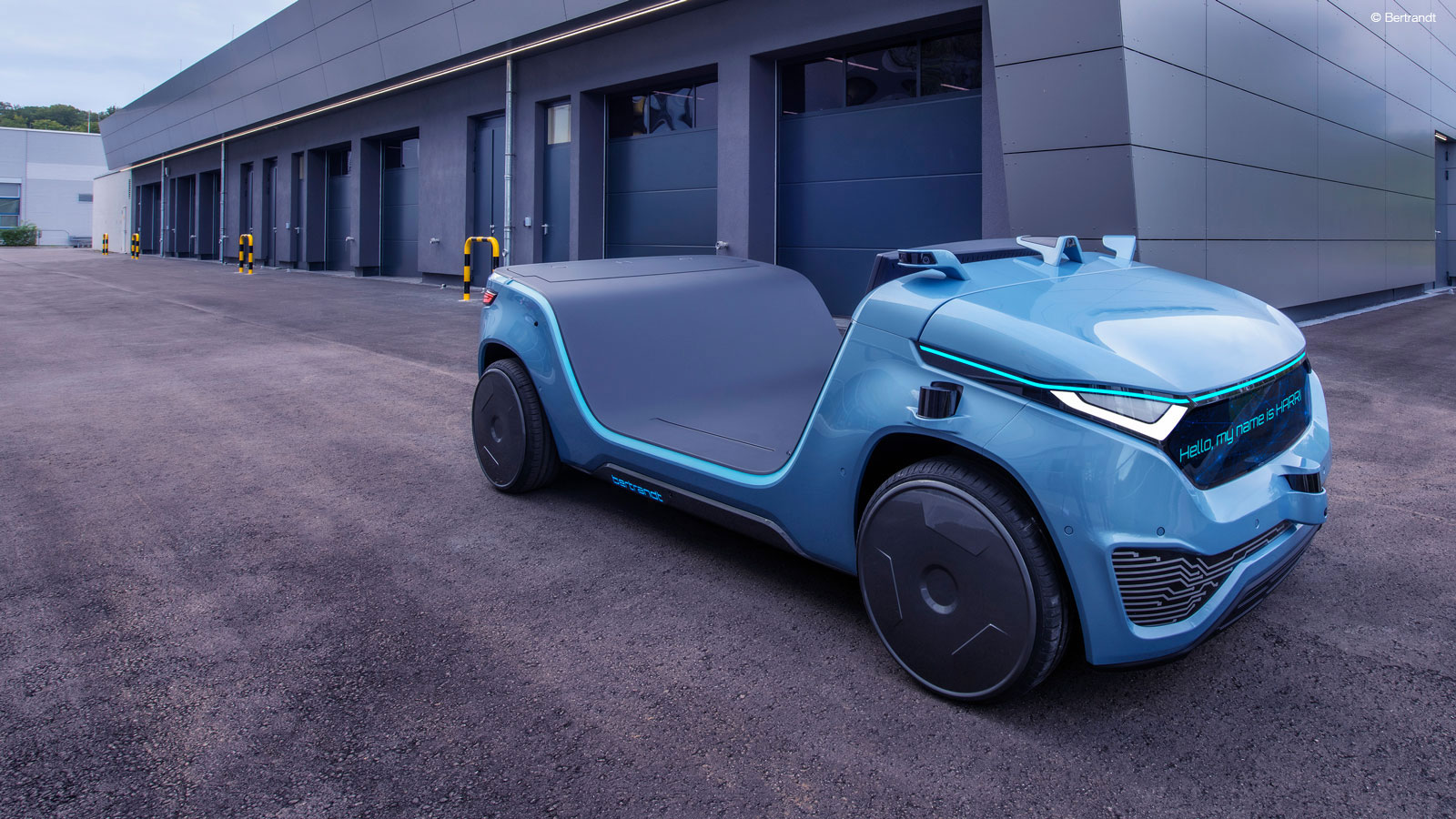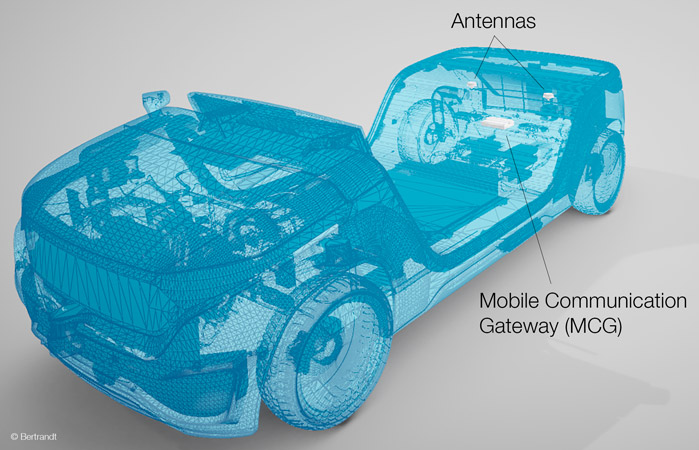You are here
Liebherr Group: Products & Services for Sweden
Other websites for Sweden

The Mobile Communication Gateway (MCG) by Liebherr as an important element of the digitalization, connectivity and autonomous driving mega-trends – insights into an innovative application and the advantages of antenna diversity.
We really appreciate the support provided by Liebherr Components. It was excellent over the entire course of the project.
For over four decades, the Bertrandt Group has been developing solutions for the automotive and aviation sectors, mechanical and plant engineering as well as the electricity and energy industries. Now the international engineering partner places their trust in communication solutions by Liebherr Components.
Bertrandt proves their technological expertise with the innovation platform HARRI. The project was shown at the automotive electronics fair ELIV in October 2019 in Bonn and at the internationally-renowned CES (Consumer Electronics Show) in January 2020 in Las Vegas.
HARRI is a platform for the connectivity, digitalization, electric mobility and autonomous driving mega-trends. It provides features such as user-friendly interfaces, car2x communication and efficient data processing.

Local preprocessing of data from the vehicle and the environment forms the basis of HARRI’s digitalization – the so-called edge computing. The freely configurable, powerful and robust telematics hardware enables edge computing as well as data transfer to a cloud.
The IoT gateway from Liebherr Components, the Mobile Communication Gateway (MCG), is deployed in HARRI. The IoT gateway connects the data sources in the vehicle, reads the information via CAN and Ethernet interfaces and pre-processes it, ensuring that data is optimized before cloud transfer. The MCG is referred to as CDC (Connectivity Domain Controller) in HARRI’s vehicle architecture. Bertrandt used Docker containers to display the application layers on the CDC. This structure helped take account of security aspects and to implement software updates over-the-air (FOTA).
We opted for the MCG since the gateway is highly robust and offers extensive scope for development. There are not many suppliers who offer such a robust system.
Based on the Linux operating system and the fully-configured Yocto build system, the MCG is freely programmable, providing extensive scope for individual applications such as over-the-air software updates.
As the gateway also fulfils the requirements of protection class IP5K2, it is ideal for the very demanding operating conditions of mobile machines – temperatures up to 70 °C, dust and vibration. The final touches are made to the telematics units at the in-house Liebherr Components Test Center. They are extensively tested at the center before they being installed in devices for internal and external customers.
At Liebherr Components we are very proud to contribute to this pioneering project with our IoT gateways.

The MCG sends and receives vehicle-relevant data via two antennas. What are the advantages of this antenna diversity?
Correctly installed, two antennas can significantly improve the connectivity of the machine. This is especially true for areas with poor internet connection.
Liebherr performed its own tests to assess the actual improvement compared with the use of one antenna. We compared the quality of the MCG network connection with one and two antennas over a pre-defined route. We carried out the tests in a rural area with poor internet connection and interchanging cellular networks over a period of one week.
The results indicate that compared to a device with only one antenna, a gateway with two antennas benefits from significantly higher connectivity. Overall, the device with two antennas was online for longer than the gateway with only one antenna. Connectivity increased from 79% to 93%.
Antenna diversity is particularly useful when a vehicle is moving through areas with poor mobile network connections. Larger vehicles in particular benefit from it as two antennas help to overcome the problem of an interrupted connection through in-vehicle shadowing.
Conclusion: Antenna diversity ensures better connection quality and better availability – and HARRI benefits from it too.